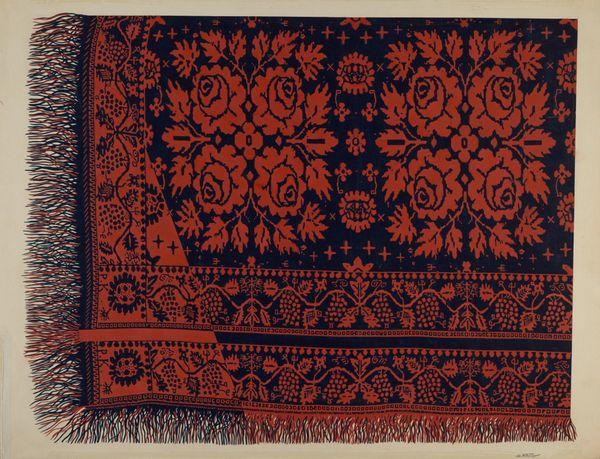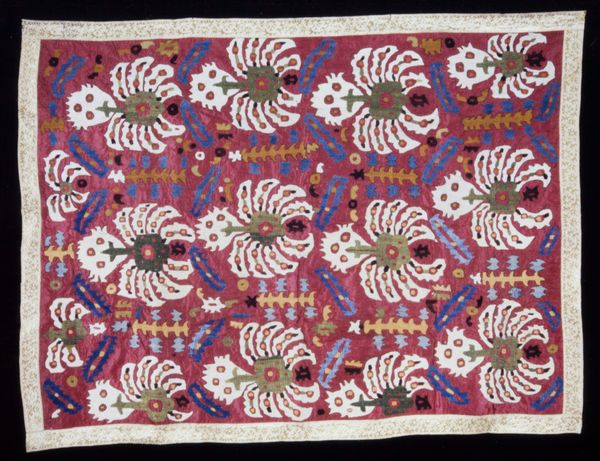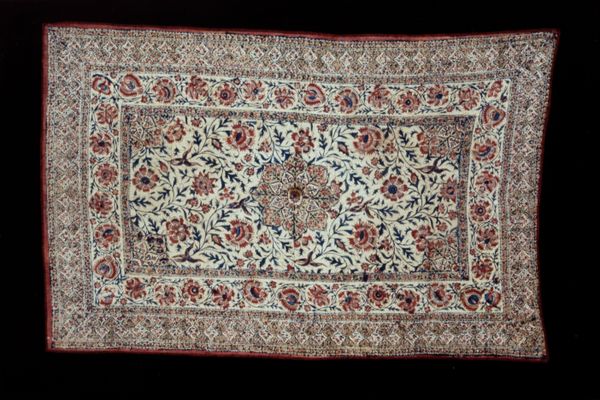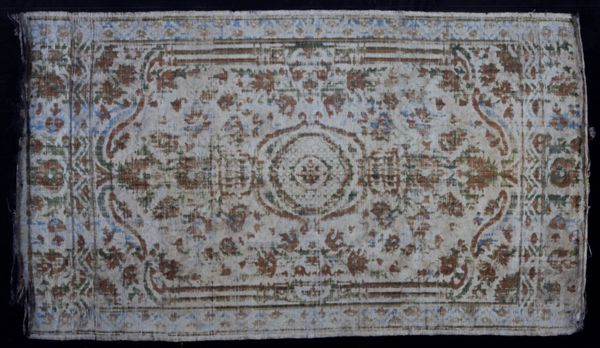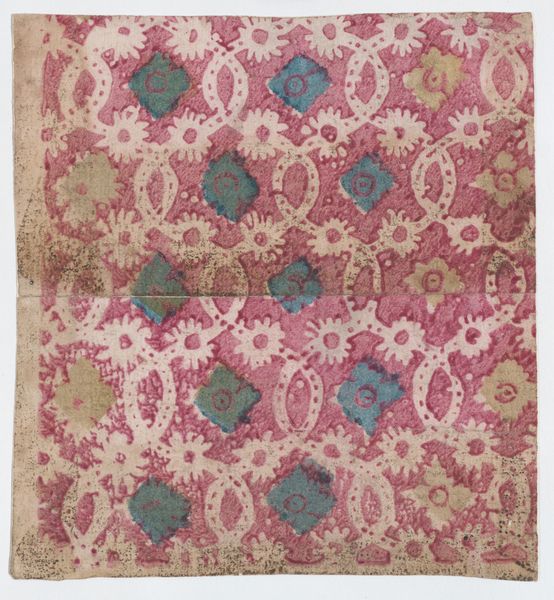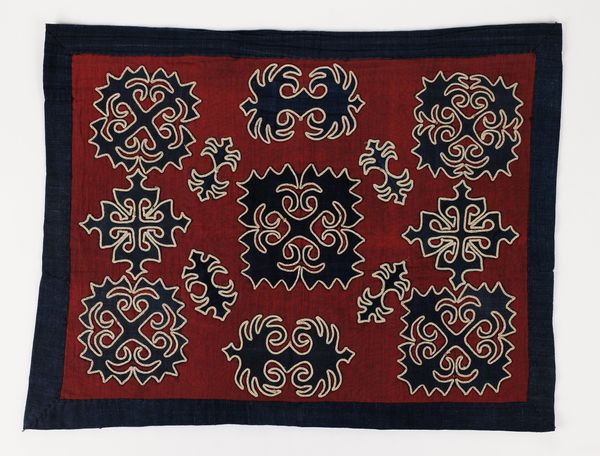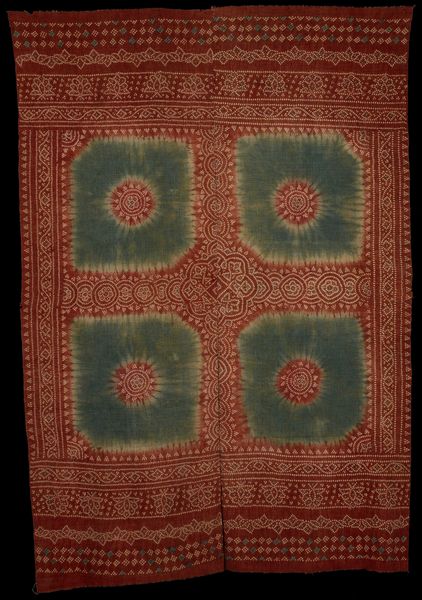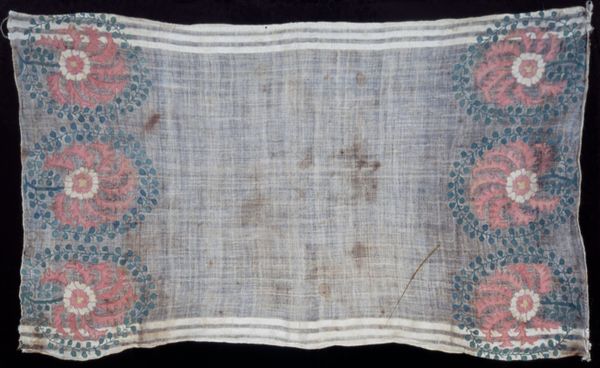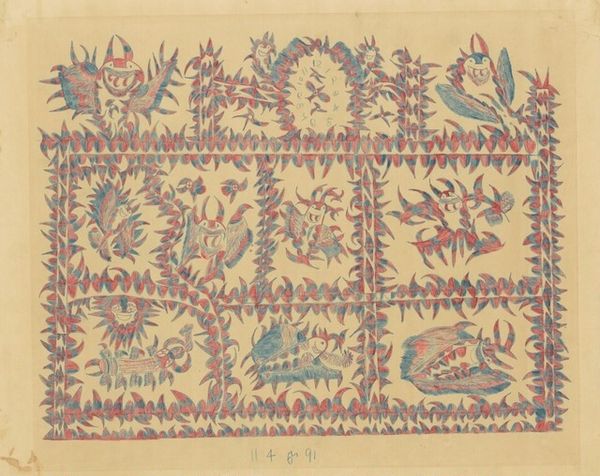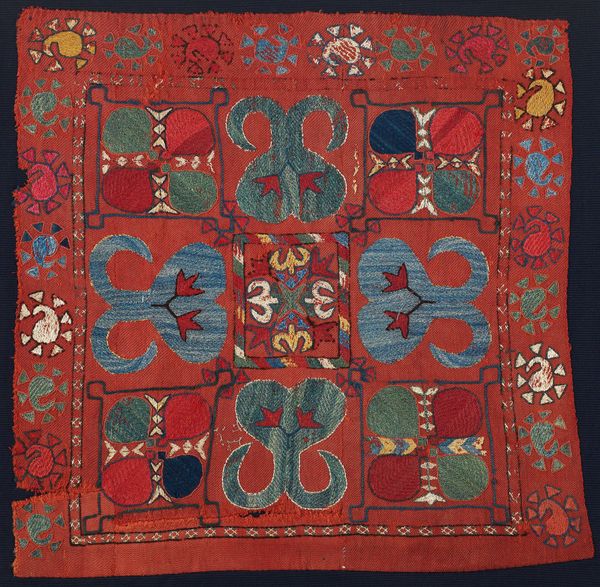
silk, weaving, textile
#
silk
#
weaving
#
textile
#
decorative-art
Dimensions: 11 1/2 x 7 3/4 in. (29.21 x 19.69 cm)
Copyright: Public Domain
Curator: This intriguing textile, simply titled "Piece," dates back to the 18th century and is housed here at the Minneapolis Institute of Art. The anonymous artisan crafted it from silk through a complex weaving process. Editor: My initial impression is that this textile, despite its age, retains a certain vibrant energy. The floral motifs, rendered in bold reds and blues against the neutral background, create a visually stimulating pattern. There’s a slight asymmetry to the arrangement that prevents it from becoming too predictable. Curator: Indeed. The strategic placement of the bolder hues draws the eye across the surface. We can see a clear application of Pattern and Decoration principles at play here—the celebration of surface ornamentation and the dissolution of hierarchical compositional structures is apparent. The piece moves away from rigid formalist traditions, inviting a different mode of visual engagement. Editor: It's fascinating to consider what societal role this textile played. Textiles of this kind were frequently employed in domestic settings or in religious rituals, serving as functional objects elevated by skilled craft to signify identity, status or faith. Considering the quality of the silk, its role likely extended beyond pure functionality. Curator: Looking closely, the craftsmanship speaks volumes. The way the individual stitches form these dense floral shapes demonstrates both skill and a dedication to the meticulous process of embellishment. I'm also intrigued by how the weave allows for a tactile quality. It departs quite starkly from painting’s emphasis on illusionism. Editor: Agreed. The slight imperfections and the visible wear hint at the object’s history of handling. Each frayed edge and softened color tell a silent story of use and possible cultural exchange. I wonder about the context in which such ornamentation was either lauded as aesthetic achievement or looked down upon due its associations with domestic crafts considered subordinate to "high" art. Curator: Considering its artistic qualities, I'm fascinated by the textile's resistance to formal closure. It challenges a singular interpretation, offering instead an interplay between color, texture and motif. Editor: Yes, "Piece", in its quiet way, challenges historical norms of art and invites consideration of often overlooked craftsmanship practices, which adds layers of political and historical meaning to what might first appear to be simply decorative.
Comments
No comments
Be the first to comment and join the conversation on the ultimate creative platform.


